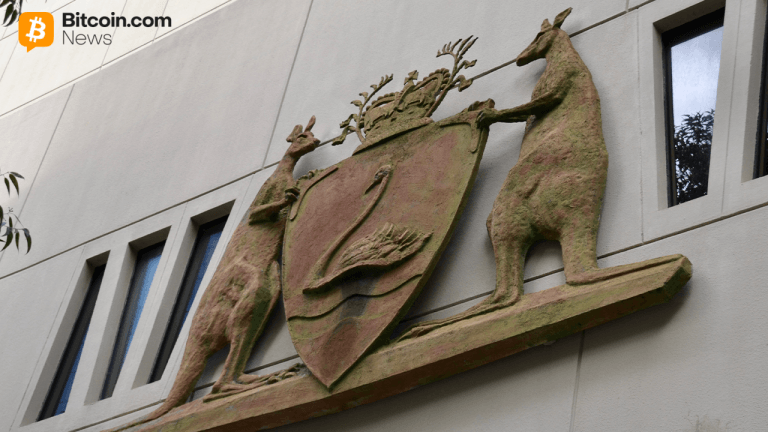Munis weaker as technicals set to improve
8 min read
Munis were weaker Thursday, as U.S. Treasury yields were little changed and equities ended down.
Technicals are supposed to become slightly more favorable into yearend, said Jeremy Holtz, a portfolio manager at Income Research + Management.
November and December are neither the lightest nor the heaviest months for reinvestment during a time when issuance will be “more manageable,” he said.
Given this, it’s possible there may be an extended rally driven by stronger technicals, but only if rates “behave.” Any rate volatility, especially some sort of selloff, would lead to muni weakness, Holtz said.
November specifically boasts three “normal” weeks, as the muni market quiets down during the Thanksgiving holiday, he said.
“You have attractive yields, and you have the Federal Reserve likely going to cut again, and if investors anticipate additional cuts and yields falling, that could increase demand quite a bit, and the technicals could really be supportive of the market,” he said.
However, the biggest headwind is the volatility in the rate and Treasury markets, which could occur for several reasons, including a prolonged government shutdown or a renewed focus on fiscal policy, Holtz said.
With the resolution of the government shutdown, the market would be faced with a flurry of economic data to digest, he noted.
While still steep past 10 years, there has been a flattening of the AAA curve, with front-end ratios significantly higher since the end of September at around 70%, while the 10- and 30-year ratios have come down, he said.
The two-year muni-UST ratio Thursday was at 68%, the five-year at 64%, the 10-year at 67% and the 30-year at 89%, according to Municipal Market Data’s 3 p.m. EDT read. ICE Data Services had the two-year at 68%, the five-year at 65%, the 10-year at 68% and the 30-year at 89% at a 4 p.m. read.
Elsewhere, total returns are positive, Holtz said.
There was a slight lag in performance for most of the year, but then September arrived and was an incredible month for munis, he noted.
“If you were asleep all year, you would not have realized that the muni market had some performance issues, at least relative to other sectors, whether it’s corporates or Treasuries; munis haven’t performed as well,” Holtz said.
However, if there is a sustained positive tone during the last two months of the year, then performance will be good, relatively speaking, he said.
Fundamentals remain strong, along with reserves and rainy-day funds, Holtz said.
Muni credit is in a strong place, enabling issuers to come to market and get favorable pricing for new deals in terms of spread compensation, he said.
In the primary market Thursday, FHN Financial priced for the Allen Independent School District, Texas, (Aaa/AAA//) $208.955 million of PSF-insured unlimited tax refunding bonds, with 5s of 2/2026 at 2.74%, 5s of 2030 at 2.62%, 5s of 2035 at 2.88%, 5s of 2040 at 3.49% and 4s of 2042 at 4.01%, callable 2/15/2035.
In the competitive market, California (Aa2/AA-AA/) sold $360.615 million of various purpose GOs, Bid Group C, to RBC Capital Markets, with 5s of 11/2045 at 3.83%, 5s of 2050 at 4.07% and 5s of 2055 at 4.14%, callable 11/1/2034.
The state also sold $339.385 million of various purpose GOs, Bid Group B, to Wells Fargo, with 5s of 11/2027 at 2.42%, 5s of 2035 at 2.71%, 5s of 2039 at 3.14% and 5s of 2043 at 3.64%, callable 11/1/2034.
Additionally, California (Aa2/AA-/AA/) sold $302.295 million of taxable various purpose GOs, Bid Group A, to J.P. Morgan, with 4.35s of 11/2032 at 4.261%, noncall.
The Virginia Public School Authority (Aaa/AAA//) sold $105.06 million of special obligation school financing bonds, to J.P. Morgan Securities, with 5s of 8/2026 at 2.65%, 5s of 2030 at 2.44%, 5s of 2035 at 2.80%, 5s of 2040 at 3.38%, 5s of 2045 at 3.90%, 5s of 2050 at 4.14%, and 5s of 2055 at 4.24%, callable 8/1/2034.
Fund flows
Investors added $719.9 million to municipal bond mutual funds in the week ended Wednesday, following $1.121 billion of inflows the prior week, according to LSEG Lipper data.
High-yield funds saw small inflows of $2.1 million compared to inflows of $178.8 million the previous week.
Tax-exempt municipal money market funds saw outflows of $2.039 billion for the week ending Oct. 28, bringing total assets to $138.398 billion, according to the Money Fund Report, a weekly publication of EPFR.
The average seven-day simple yield for all tax-free and municipal money-market funds rose to 2.29%.
Taxable money-fund assets saw $17.047 billion added, bringing the total to $7.242 trillion.
The average seven-day simple yield was at 3.79%.
The SIFMA Swap Index was at 3.22% on Wednesday compared to the previous week’s 2.50%.
For the past 19 weeks, muni issuers with variable rate tax-exempt debt exposure (VRDNs in weekly reset mode), such as many hospitals, universities, states and municipalities, have seen “fairly stable” interest rates well below 3%, said Rick White, an independent consultant with more than 25 years in the industry.
Since June 11, dealers have seen “their unsold bond inventory amounts remain at very manageable levels,” he said, noting this week sees that change as dealers are currently sitting on well over $7 billion in weekly reset mode paper.
Additionally, Wednesday’s Fed action will not have an immediate impact on SIFMA this week as dealers need to find new buyers for over $7 billion in inventory, White said.
AAA scales
MMD’s scale was cut two to three basis points: 2.56% (+3) in 2026 and 2.46% (+2) in 2027. The five-year was 2.38% (+2), the 10-year was 2.73% (+3) and the 30-year was 4.15% (+3) at 3 p.m.
The ICE AAA yield curve was cut two to four basis points: 2.54% (+4) in 2026 and 2.47% (+4) in 2027. The five-year was at 2.42% (+3), the 10-year was at 2.76% (+3) and the 30-year was at 4.10% (+2) at 4 p.m.
The S&P Global Market Intelligence municipal curve saw small cuts: The one-year was at 2.55% (+3) in 2025 and 2.46% (+2) in 2026. The five-year was at 2.38% (+2), the 10-year was at 2.73% (+2) and the 30-year yield was at 4.12% (+3) at 3 p.m.
Bloomberg BVAL was cut two to three basis points: 2.52% (+3) in 2025 and 2.47% (+3) in 2026. The five-year at 2.37% (+3), the 10-year at 2.72% (+2) and the 30-year at 4.06% (+2) at 4 p.m.
Treasuries were little changed.
The two-year UST was yielding 3.609% (+1), the three-year was at 3.611% (+1), the five-year at 3.719% (+1), the 10-year at 4.09% (+1), the 20-year at 4.624% (+2) and the 30-year at 4.644% (+2) near the close.
Fed redux
Fallout from the Federal Open Market Committee meeting and Fed Chair Jerome Powell’s press conference continued Thursday, as analysts interpreted the data.
“Powell’s very clear communication goal Wednesday was to align market expectations with a policy-making committee that is split on the issue of what to do in December,” said Jon Hilsenrath, senior advisor to StoneX Group. “He delivered this message clearly and effectively. Market expectations have quickly aligned.”
Nigel Green, CEO of deVere Group, noted the division among members. “The Fed is now divided on direction,” he said. “Some members still see inflation as the bigger threat; others worry about employment. This disagreement means policy will move in smaller, slower steps, if at all.”
Investors should not assume another rate cut this year, Green said.
With job creation slumping and sticky inflation, he said, “this is the textbook definition of stagflation risk. It’s not a crisis yet, but the warning signs are flashing. Prices are sticky, wages are slowing, and confidence is thinning.”
But the Fed can’t fix the situation quickly, unless it wants to reignite inflation, Green said.
The Fed has become constrained, he added. “We expect that there’ll be no more cuts this year, inflation will stay elevated, and jobs will weaken further,” he said.
With no consensus, the Fed must face the dual issues of higher prices and slowing employment, Green noted. “This is how stagflation begins, and investors need to plan for that reality now.”
Jack McIntyre, portfolio manager at Brandywine Global, looked at the dissents. “Miran’s call for a larger cut could be dismissed as too dovish. But Schmid’s call for no cut combined with Powell’s comments during the press conference, in which he said he wants to put some daylight between the Fed’s view of potential future rate cuts with the market’s view for December, can’t be easily dismissed.”
As such, he expects “less complacency in financial markets, more volatility, and more two-way flows.”
Schmid’s dissent “strengthens the idea that central bankers are becoming less united on how monetary policy should evolve,” said DWS U.S. Economist Christian Scherrmann. “This idea was already implied by the nearly split dot plot and diverse Fed speak, but the hawkish dissent adds weight to it.”
He attributes this to the lack of economic data. “While we agree that the available data supports the view that labor markets and inflation have not suddenly improved in line with the Fed’s dual mandate, the risk of surprises on both fronts has already increased,” Scherrmann said.
DWS expects the Fed to cut rates to around 3% — its estimate of neutral — within 12 months. “However, the timing of the cuts remains uncertain, and expectations of back-to-back Fed rate cuts are likely overly optimistic, given the prevailing uncertainties,” he said.
With economic growth expected to be better than expected and some stabilization in the labor market, Andrzej Skiba, head of BlueBay U.S. fixed income at RBC Global Asset Management, sees “reason for caution.”
While a December ease relies on labor market data, he said, “we continue to believe it’s a close call.”
Next year, “a new Fed chair is likely to advocate for a cut upon assuming office, but it’s a perfectly plausible scenario that we see fewer than three cuts across 2026, driven by our expectations of both stronger growth and sticky inflation,” Skiba said. “Having said that, as long as 2026 U.S. growth beats expectations, we don’t believe that markets are likely to tumble if the Fed was to cut less than expected.”
With Powell repeating the cut was “risk management,” while the potential December move was a “different thing,” Christian Chan, CIO at AssetMark, said, “In my view, this implies that Powell believes we are closer to a neutral rate, which … could mean a shorter rate-cutting cycle than most anticipate.”
Comerica Bank Chief Economist Bill Adams expects a rate cut in December, although the Fed “will likely still be driving in the dark and wearing sunglasses.” Since even if the government reopens, “government statistical releases are unlikely to catch up with their schedule by then.”
After that, Comerica sees rates steady until a new chair takes the helm at the Fed, “with a cumulative three-quarters of a percent in rate cuts forecast between the end of Powell’s term and the end of 2026,” Adams said. “That would lower the fed funds target to 2.75%-3.00% at the end of 2026, a level that is roughly neutral.”
Given the downside risks in the labor market, Jeffrey Roach, chief economist at LPL Financial, expects “the Fed will continue to cut rates in December and throughout the next year.”
“Powell gave investors a peek behind the curtain showing markets that there is no foregone agreeable path when it comes to the committee voters,” said Jay Woods, chief market strategist at Freedom Capital Markets. Meeting their dual mandate “remains tricky,” he said.
“Given the potential contentious tone behind the scenes when it comes to a December decision, it will be telling to keep an eye out as the quiet period is now over and the committee members make the speaking rounds,” Woods said.







